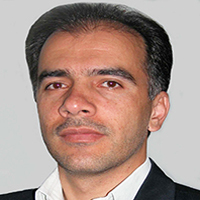Measuring of Social Resilience of New Urban Habitations against Earthquake Risk Using MARCOS Method (Case Study: Isfahan Urban Area)
Resilience Against Earthquake, which is actually how geographical, societal, economic, institutional, and so on societies are affected by disasters, is one of the issues that should be addressed in every society. It is important to note that the type of attitude toward resilience and how it is analyzed on the one hand plays a key role in how resilience is understood and its causes and on the other hand it affects the policies and measures of risk reduction and how to deal with it. The purpose of this study was to classify new urban Habitations of Isfahan city against earthquake hazard. According to the investigated components and the nature of the issue, the approach that is used in this research is "descriptive-analytical". The statistical population of this research consists of 6 new Habitations of Shahin Shahr, Majlesi, Sepahan Shahr, Fooladshahr, Baharestan and Shahid Keshvari Township. The purpose of this research is practical and has been done in the literature and Library of research for data collection through library method. In this study, the authors sought to answer the question of what is the level of resilience of new urban Habitations in Isfahan urban area against earthquake? Based on the results of this study, the new Habitations of Shahin shahr, Shahid Keshvari, Baharestan, Fooladshahr, Sepahan Shahr and Majlesi with desirable functions of 0.889, 0.335, 0.300, 0.279, 0.275 and 0.272 respectively have Ranks 1 to 6 in social resilience against earthquake risk.
-
Determining Key Factors Effective in Medical Tourism Development (Case Study: Isfahan Metropolis)
Farahnaz Abolhassani, Ali Zangiabadi *, Alireza Jabbari
Journal of Tourism Management Studies, -
Comparative Feasibility Study of Realizing a Resilient City with Emphasis on the Components of Good Urban Governance (Case Study: New Habitations in Isfahan Metropolitan)
Fazlallah Karimi Ghotbabadi, Ali Zangiabadi *
Urban Areas Studies,



